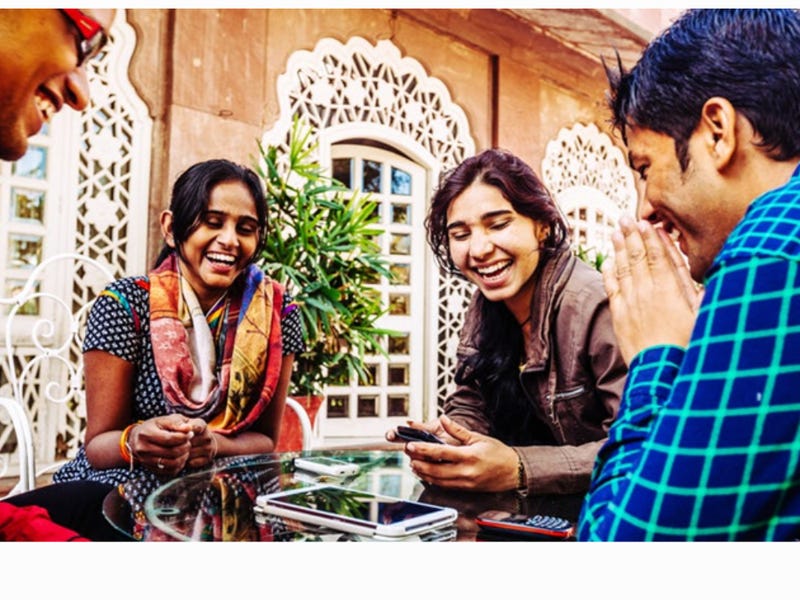|
English
|
Chinese
|
Pinyin
|
Pronunciation
|
|
E-commerce
|
电子商务
|
diàn zǐ shāng wù
|
diann tzyy shang wuh
|
|
Sales volume
|
销售量
|
xiāo shòu liàng
|
shiau show lianq
|
|
Customer
|
顾客
|
gù kè
|
guh keh
|
|
Buyer
|
买方
|
mǎi fāng
|
mae fang
|
|
Seller
|
卖方
|
mài fāng
|
mae fang
|
|
Agent
|
代理商
|
dài lǐ shāng
|
day lii shang
|
|
Retail
|
零售
|
líng shòu
|
ling show
|
|
Wholesale
|
批发
|
pī fā
|
pi fa
|
|
Deal
|
交易
|
jiāo yì
|
jiau yih
|
|
Credit card
|
信用卡
|
xìn yòng kǎ
|
shinn yonq kaa
|
|
Model
|
型号
|
xíng hào
|
shyng haw
|
|
Wholesale price
|
批发价
|
pī fā jià
|
pi fa jiah
|
|
Retail price
|
零售价
|
líng shòu jià
|
ling show jiah
|
Most popular e-commerce platforms in China
Although some Western e-commerce platforms operate in China, the vast majority of Chinese consumers shop on Chinese apps like Taobao and JD. In fact, Amazon recently announced it would close its Chinese app, marking another important milestone in the e-commerce giant’s retreat from the Chinese market. If you’re curious to know what apps Chinese people use for shopping or if you want to become a proficient seller, here are the apps you need to download immediately:
|
English
|
Chinese
|
Pinyin
|
Pronunciation
|
|
Taobao
|
淘宝
|
táo bǎo
|
taur bao
|
|
JD
|
京东
|
jīng dōng
|
jing dong
|
|
Douyin
|
抖音
|
dǒu yīn
|
doou in
|
|
Pinduoduo
|
拼多多
|
pīn duō duō
|
pin duo duo
|
|
TMall
|
天猫
|
tiān māo
|
tian mhau
|
|
Xiaohongshu
|
小红书
|
xiǎo hóng shū
|
sheau horng shu
|
|
Alibaba
|
阿里巴巴
|
ā lǐ bā bā
|
a lii ba ba
|
|
Vipshop
|
唯品会
|
wéi pǐn huì
|
wei piin huey
|
|
Dianping
|
大众点评
|
dà zhòng diǎn píng
|
dah jonq dean pyng
|
|
Meituan
|
美团
|
měi tuán
|
meei twan
|
|
Amazon China
|
亚马逊中国
|
yà mǎ xùn zhōng guó
|
yah maa shiunn jong gwo
|
|
Suning
|
苏宁
|
sūn níng
|
suen ning
|
|
Dangdang
|
当当
|
dāng dāng
|
dang dang
|
|
VMall
|
华为商城
|
huá wéi shāng chéng
|
hwa wey shang cherng
|
Double Eleven Shopping Holiday (双十一)
Anyone who grew up in the West could easily imagine that Black Friday (the Friday after Thanksgiving) is the biggest shopping holiday in the world. However, China’s Double Eleven shopping holiday takes the prize. Called 双十一 (shuāng shí yī) in Chinese, which literally means “a couple of elevens,” as it falls on 11/11 every year. This holiday was developed in the 90s as a way for companies to market to single people. That’s why it’s also commonly referred to as Single’s Day in English, alluding to the original intent of marketing to single people.
However, this holiday has exploded over the past decade, thanks in part to Alibaba’s efforts to turn this into a weeks-long shopping extravaganza. Now, Double Eleven deals start popping up in late October and run through the third week of November, with countless opportunities for shoppers to enjoy great deals on virtually any item available on TMall and almost any other e-commerce platform, including JD, Suning, and more.
This has now become a massive revenue driver for companies, both local and foreign. In 2022, Vitamix ran a Singles' Day video campaign that was viewed by over 100 million people — that’s almost as many people as watching the Superbowl!
So, if you’re looking to start selling your products on Chinese e-commerce platforms, then you need to put Double Eleven on your calendar and plan for it way in advance so you can outperform your competitors!
What’s a KOL?
One of the biggest tools foreign brands can use to connect with and build a strong reputation is a KOL, which stands for Key Opinion Leader. The concept of KOLs in China is somewhat unique, although still loosely related to that of influencers in the West. You’re probably used to influencers selling products and doing paid partnerships on social media, but a KOL isn’t just an influencer.
KOLs in China always have some topical authority on the products they promote. For example, a famous doctor might be a KOL for pharmaceutical brands. A successful hairstylist may be a KOL for haircare products. A certified fitness trainer may be a KOL for fitness products. You get the gist.
There are typically three tiers of KOLs: celebrities, bloggers, and influencers. The first tier includes A-list celebrities who can command authority on certain topics. The second tier is for bloggers who have dedicated their careers to becoming experts in a specific field, like handbags or perfumes. These people are experts in the field and their followers deeply respect their opinions. The third tier includes social media influencers, who can persuade their followers to make a purchase but aren’t necessarily seen as an authoritative source on a particular field.
This means that finding the right KOL for your brand is essential, as you can’t simply go off of follower counts and impressions — you need to make sure that the KOL is the right fit for your brand. Finding a suitable KOL can be a very strong way to enter the Chinese market, as you’ll have a reliable and reputable ally with a loyal following to help introduce you to Chinese consumers.
What’s a KOC?
If you’ve heard of a KOL, then you might have heard of a KOC. This acronym stands for Key Opinion Consumer, and they’re often included in KOL marketing campaigns. As its name suggests, a KOC is simply a consumer who can influence other consumers. These are key people who have no more than a few hundred followers yet can still have an impact on your products and marketing campaign.
Including KOCs in your campaigns in addition to KOLs has some distinct advantages. The most obvious one is that KOCs, given their small size, aren’t generally paid, so you’ll be able to include many of them without blowing up your budget. Second, KOCs have a higher degree of perceived authenticity. Since consumers know that KOCs aren’t paid, there is less at stake for leaving an honest review.
Working with KOCs can be as easy as identifying consumers who’ve already made a post about your product or have tagged your brand account on any of their publications. You can then reach out and ask if they’d be willing to make an extended review or simply leave a review on your website. Alternatively, you can contact KOCs and offer to send free products in exchange for a brief review.
Vocabulary words about KOLs & KOCs
The world of KOLs and KOCs is very vast, and there are many terms that you’re likely to encounter as you delve into it. Here are some of the most common vocabulary words about KOLs and KOCs in China.

|
English
|
Chinese
|
Pinyin
|
Pronunciation
|
Notes
|
|
Top-tier KOL
|
头部 KOL
|
tóu bù KOL
|
tour buh KOL
|
A major KOL with over a million followers.
|
|
Mid-tier KOL
|
腰部 KOL
|
zhōng bù KOL
|
jong buh KOL
|
A KOL with 10,000 to 100,000 followers.
|
|
Microl KOL
|
尾部KOL
|
wěi bù KOL
|
woei buh KOL
|
A microKOL has a smaller following base but higher engagement rate and fewer fake or inactive followers than larger KOLs, making them worthwhile.
|
|
PGC (Professional Generated Content)
|
专业生产内容
|
zhuān yè shēng chǎn nèi róng
|
juan yeh sheng chaan ney rong
|
Professional content generated by an agency, as opposed to organic content made by the KOLs.
|
|
Water army
|
水军
|
shuǐ jūn
|
shoei jiun
|
Fake followers.
|
|
Zombie fans
|
僵尸粉
|
jiāng shī fěn
|
jiang shy feen
|
Fake followers.
|
|
Planting grass
|
种草
|
zhòng cǎo
|
joong tsao
|
Sharing and recommending something for someone's liking
|
|
Pulling grass
|
拔草
|
bá cǎo
|
bar tsao
|
Persuading others to refrain from their buying impulse
|
|
Growing grass
|
长草
|
zhǎng cǎo
|
jaang tsao
|
Building up interest for a product.
|
|
Niche
|
小众
|
xiǎo zhòng
|
sheau jonq
|
|
|
Sales king/queen
|
带货王
|
dài huò wáng
|
day huoh wang
|
A KOL that is extremely effective at selling product.
|
|
Play the meme
|
玩梗
|
wán gěng
|
wan geeng
|
Incorporating memes into your strategy.
|
|
Celebrity
|
明星
|
míng xīng
|
ming shing
|
|
|
Big social media influencer
|
大V
|
dà V
|
dah V
|
|
|
Internet celebrity
|
网红
|
wǎng hóng
|
woang horng
|
|
|
Brand cooperation
|
品牌合作
|
pǐn pái hé zuò
|
piin pair her tzuoh
|
|
|
Fan economy
|
粉丝经济
|
fěn sī jīng jì
|
feen sy jing jih
|
|
|
Passer-by converted into a fan
|
路转粉
|
lù zhuǎn fěn
|
luh joan feen
|
|
Chinese marketing acronyms
You’re probably familiar with English marketing acronyms like SEO, PPC, KPI, CTR, and more, but what about Chinese acronyms? Perhaps you’d be surprised to learn that they also use acronyms for English terms, but maybe not the ones you’d expect. Here are the most common Chinese marketing acronyms:

|
Acronym
|
Meaning
|
Notes
|
|
10w+
|
10 wan plus
|
Stands for 100,000 and more, and is used to refer to the goal of reaching 100,000 or more followers on social media, which is usually seen as a benchmark for being influential.
|
|
C2M
|
Customer-to-manufacturer
|
Used to refer to companies that make products based on consumer feedback.
|
|
CP
|
Couple marketing
|
Using couples to take advantage of their relationship to promote a product. The idea is that the chemistry within the couple will bleed into the reputation of the product being advertised.
|
|
D2C
|
Direct to consumer
|
Companies that cut out the middleman and sell directly to consumers.
|
|
G2C
|
Global to China
|
Used to describe sales tactics aimed at capturing the Chinese market, like accepting Chinese payment methods and marketing on Chinese social media apps.
|
|
H5
|
Hypertext Markup Language 5
|
You’ve heard of Hypertext Markup Language before — that’s what HTML stands for. H5 refers to the current version of HTML used by most websites. However, this acronym usually refers to fancy landing sites that incorporate state-of-the-art technology to maximize the chances of converting visitors.
|
|
IP
|
Intellectual property
|
|
|
KOC
|
Key Opinion Consumer
|
|
|
KOL
|
Key Opinion Leader
|
|
|
MCN
|
Multi-Channel Network
|
Refers to companies that manage multiple KOLs, almost like talent agencies.
|
|
O+O
|
Online plus Offline
|
Used to refer to a marketing strategy that includes both online and offline tactics.
|
|
O2O
|
Online to Offline
|
Refers to marketing strategies that encourage customers to visit a physical location. For example, restaurants may offer coupons online that are only redeemable for dining in.
|
|
SNS
|
Social Network Sites
|
Refers to Chinese social media apps, like WeChat and Weibo.
|
Further your career with these Chinese marketing vocabulary terms
Whether you’re looking to become the newest e-commerce mogul in China or simply want to grow your business with some extra sales, getting a handle on these marketing terms is the best place to start. Penetrating the Chinese market can be a daunting task, but understanding what we’ve covered in this blog will help you cover the essentials. From the unique world of e-commerce to what goes on behind the Great Firewall, you’ve now got a glimpse into the thriving marketing environment of China.










